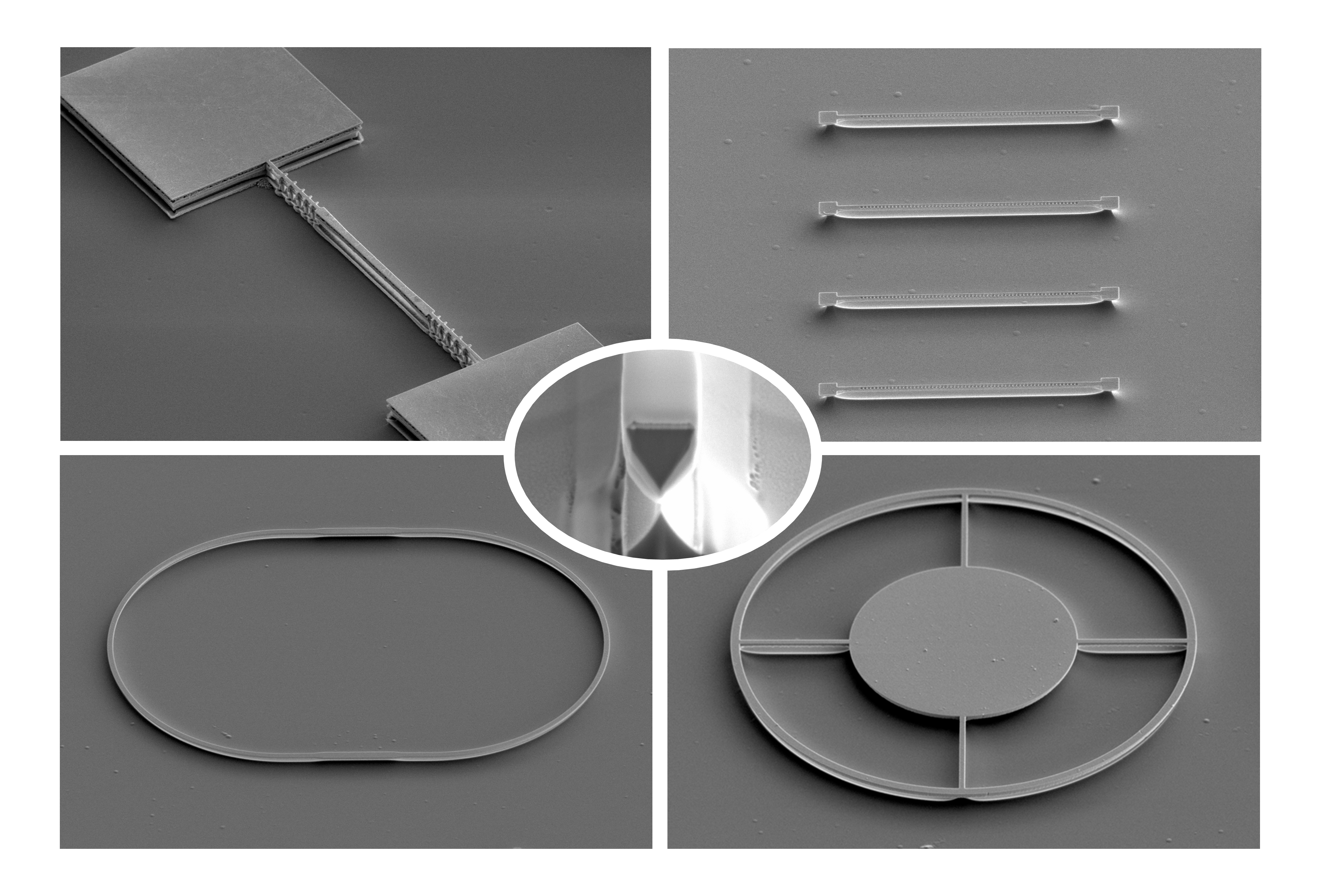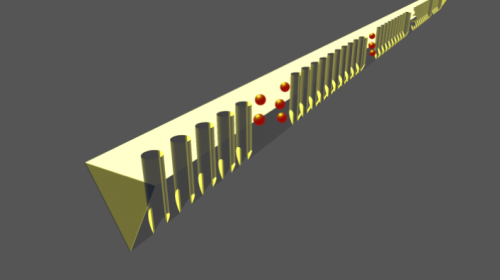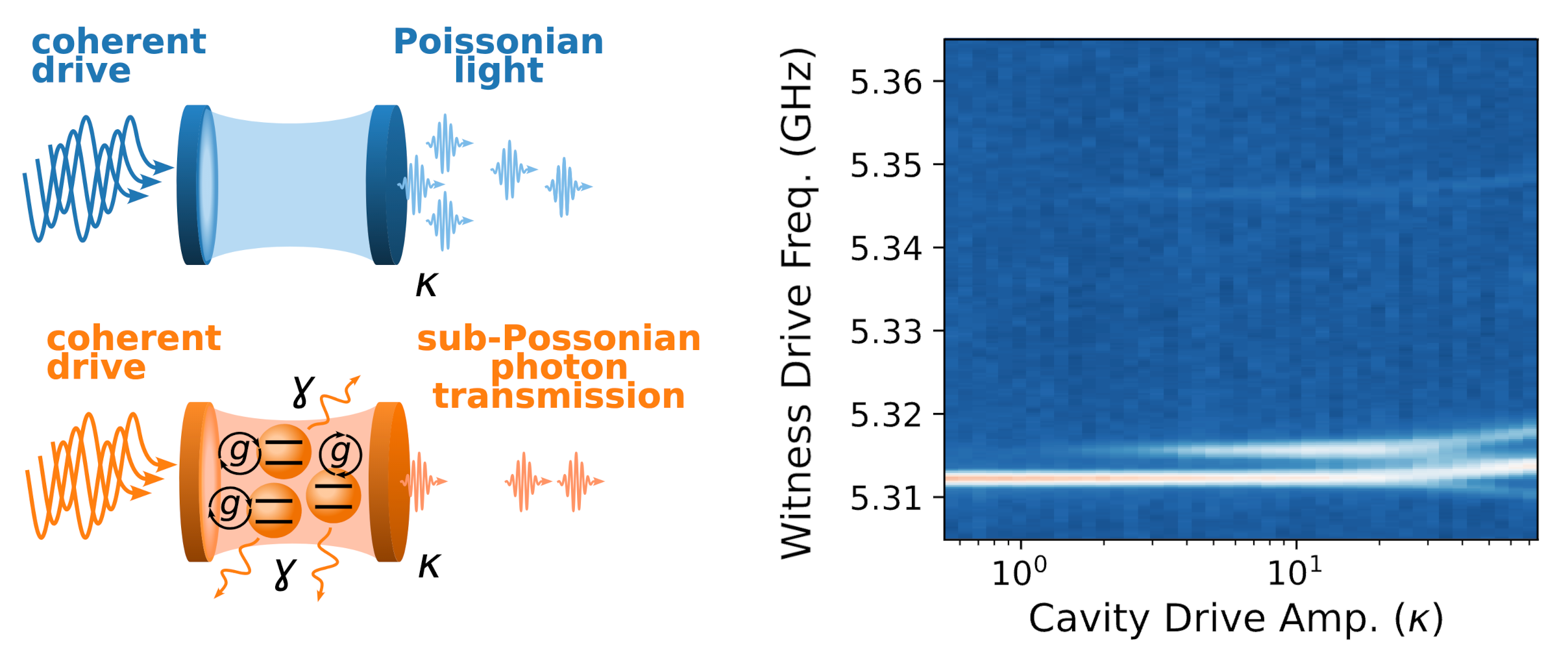Color centers for quantum telecommunications

Near-infrared (NIR) color centers are emerging as powerful tools in quantum technologies due to favorable optical properties and scalability. Color centers, which are defects in semiconductor lattices, behave as quasi-atomic systems in solid-state environments. They emit single-photons, sources of light in quantum communication, and serve as interfaces between light and matter by coupling photons to electron or nuclear spins. What makes NIR color centers particularly promising is their combination of long spin coherence times (which can store information for up to seconds) and their compatibility with scalable nanophotonic integration. These qualities position them as leading candidates for realizing compact, chip-based quantum devices with real-world applicability. In R-Lab, we investigate color centers in silicon carbide and silicon using confocal photoluminescence and time-resolved spectroscopy. We aim to identify emitters that are robust, spectrally homogeneous, with favorable quantum entanglement processes—key traits for practical quantum systems.
- V. A. Norman, S. Majety, A. H. Rubin, P. Saha, N. R. Gonzalez, J. Simo, B. Palomarez, L. Li, P. B. Curro, S. Dhuey, S. Virashawmy, M. Radulaski, "Sub-2 Kelvin characterization of nitrogen-vacancy centers in silicon carbide nanopillars," arXiv:2401.10509.
- S. Majety, P. Saha, V. A. Norman, M. Radulaski, "Quantum Information Processing With Integrated Silicon Carbide Photonics," Special Topic Collection on Defects in Semiconductors, Journal of Applied Physics 131, 130901 (2022), arXiv:2111.00136.
- S. Castelletto, A. Peruzzo, C. Bonato, B. Johnson, M. Radulaski, H. Ou, F. Kaiser, J. Wrachtrup, "Silicon Carbide Photonics Bridging Quantum Technology," ACS Photonics 9, 5, 1434-1457 (2022).
Triangular photonics for scalable quantum information processing

Integration of color centers with active and passive photonic devices is necessary to elevate their performance in quantum information processing. Nanofabrication challenges arise from the trade-off between the quality of the lattice and the undercutting techniques. A leading approach to maintaining the color center quality and creating suspended devices uses angle-etching methods which result in triangular cross-section devices. Chip-scale experiments have shown that the optical and spin properties of color centers in silicon carbide remain intact upon integration with triangular waveguides. In R-Lab, we take a different approach to demonstrate wafer-scale angle-etching on an arbitrary SiC substrate via the Reactive Ion Beam Etching (RIBE) process with a rotating tilted wafer. The triangular geometry in SiC supports single-mode waveguide propagation, high quality factor optical resonances, photonic band gap formation, mesh photonics, and highly efficient on-chip integration with superconducting nanowire single photon detectors (SNSPDs), paving the way to realize complex on-chip quantum optical circuitry for large-scale quantum information hardware.
- P. Saha, S. Majety, S. Dhuey, M. Radulaski, "Triangular cross-section grating couplers for integrated quantum nanophotonic hardware in silicon carbide," arXiv:2410.12150.
- S. Majety, V. A. Norman, P. Saha, A. H. Rubin, S. Dhuey, M. Radulaski, "Wafer-Scale Integration of Freestanding Photonic Devices with Color Centers in Silicon Carbide," npj Nanophotonics 2, 3 (2025), arXiv:2405.07498.
- S. Majety, P. Saha, Z. Kekula, S. Dhuey, M. Radulaski, "Triangular Cross-Section Beam Splitters in Silicon Carbide for Quantum Information Processing," MRS Communications, 1-7 (2024), arXiv:2311.07845.
- P. Saha, S. Majety, M. Radulaski, "Utilizing photonic band gap in triangular silicon carbide structures for efficient quantum nanophotonic hardware," Scientific Reports 13, 4112 (2023), arXiv:2208.02996.
- S. Majety, S. Strohauer, P. Saha, F. Wietschorke, J. J. Finley, K. Müller, M. Radulaski, "Triangular Quantum Photonic Devices with Integrated Detectors in Silicon Carbide," Materials for Quantum Technology 3, 1 (2023), arXiv:2208.05569.
- C. Babin, R. Stoehr, N. Morioka, T. Linkewitz, T. Steidl, R. Woernle, D. Liu, E. Hesselmeier, V. Vorobyov, A. Denisenko, M. Hentschel, C. Gobert, P. Berwian, G. Astakhov, W. Knolle, S. Majety, P. Saha, M. Radulaski, N. T. Son, J. Ul-Hassan, F. Kaiser, J. Wrachtrup, "Fabrication and nanophotonic waveguide integration of silicon carbide colour centres with preserved spin-optical coherence," Nature Materials 21, 67–73 (2022), arXiv.2109.04737.
- S. Majety, V. A. Norman, L. Li, M. Bell, P. Saha, M. Radulaski, "Quantum photonics in triangular-cross-section nanodevices in silicon carbide," Journal of Physics: Photonics 3, 034008 (2021), arXiv.2012.02350.
All-photonic quantum simulators

Like Schrödinger’s cat’s mixed livelihood and a photon’s particle-wave duality, polariton, the quasiparticle that embodies the quantum hybridized state of light and matter, challenges our notion of the forms that a system can take in nature. Created when electromagnetic cavities strongly couple to two-level systems, this quasiparticle has been at the heart of solid state research in optical quantum technologies. Polaritons have been explored for low-threshold lasing, ultrafast switching, quantum light generation, display technologies, and more. In R-Lab we explore polaritons in systems where color centers couple to coupled cavity arrays for analog simulators of condensed matter models. These all-photonic quantum simulators are predicted to mimic superfluidity, insulation, as well as relevant phase transitions in materials.
- J. Y. Patton, V. A. Norman, E. C. Mann, B. Puri, R. T. Scalettar, M. Radulaski, "Polariton Creation in Coupled Cavity Arrays with Spectrally Disordered Emitters," Materials for Quantum Technology 4, 024501 (2024), arXiv:2112.15469.
- E. Baum, A. Broman, T. Clarke, N. C. Costa, J. Mucciaccio, A. Yue, Y. Zhang, V. Norman, J. Patton, M. Radulaski, R. T. Scalettar, "Effect of Emitters on Quantum State Transfer in Coupled Cavity Arrays," Physical Review B 105, 195429 (2022), arXiv:2112.05740.
Analog quantum simulation of light-matter interaction on NISQ testbeds

Many-body cavity quantum electrodynamics (QED) systems can exhibit surprising and counterintuitive features, such as super- and sub-radiance, and various forms of photon blockade. These phenomena are of fundamental interest, and have potential applications in building quantum memories and single-photon sources. Fabricating such many-body systems in the optical domain is challenging. However, we can exploit a close analogy between cavity QED and circuit QED to build systems of superconducting qubits which exhibit the same many-body physics, but with more precise control and tunability. These analog simulations provide a new window through which to explore cavity QED, helping to guide our research in the optical domain.
- B. Marinelli, A. H. Rubin, V. A. Norman, S. Yang, R. Naik, B. M. Niedzielski, D. K. Kim, R. Das, M. Schwartz, D. I. Santiago, C. Spitzer, I. Siddiqi, M. Radulaski, "Observation of Photon Blockade in a Tavis-Cummings System," arXiv:2501.18751.
Quantum algorithms for open quantum system simulation

Quantum computers promise to outperform classical computers when it comes to simulating quantum physics phenomena. This makes them a natural tool for exploring the physics of groups of quantum emitters coupled to optical cavities. To capture the full behavior of quantum emitters coupled to a cavity, we must consider it an open system, so that photons can be exchanged with the environment. In collaboration with theorists, in R-Lab we develop quantum algorithms for studying open many-body cavity quantum electrodynamics on quantum processors. In collaboration with DOE quantum testbeds, we implement our algorithms on NISQ quantum hardware.
- A. N. Sims, D. Patel, A. Philip, A. H. Rubin, R. Bandyopadhyay, M. Radulaski, M. M. Wilde, "Digital Quantum Simulations of the Non-Resonant Open Tavis-Cummings Model," arXiv:2501.18522.
- A. H. Rubin. B. Marinelli, V. A. Norman, Z. Rizvi, A. D. Burch, R. K. Naik, J. M. Kreikebaum, M. N. H. Chow, D. S. Lobser, M. C. Revelle, C. G. Yale, M. Ivory, D. I. Santiago, C. Spitzer, M. Krstic-Marinkovic, S. M. Clark, I. Siddiqi, M. Radulaski, "Digital Quantum Simulation of Cavity Quantum Electrodynamics: Insights from Superconducting and Trapped Ion Quantum Testbeds," arXiv:2404.03861.
- M. K. Marinkovic, M. Radulaski, "Singly-excited resonant open quantum system Tavis-Cummings model with quantum circuit mapping," Scientific Reports 13, 19435 (2023), arXiv:2208.12029.
- R. Bandyopadhyay, A. H. Rubin, M. Radulaski, M. Wilde, "Efficient quantum algorithms for testing symmetries of open quantum systems," Open Systems & Information Dynamics 30, 03, 2350017 (2023), arXiv:2309.02515.
Research partners


